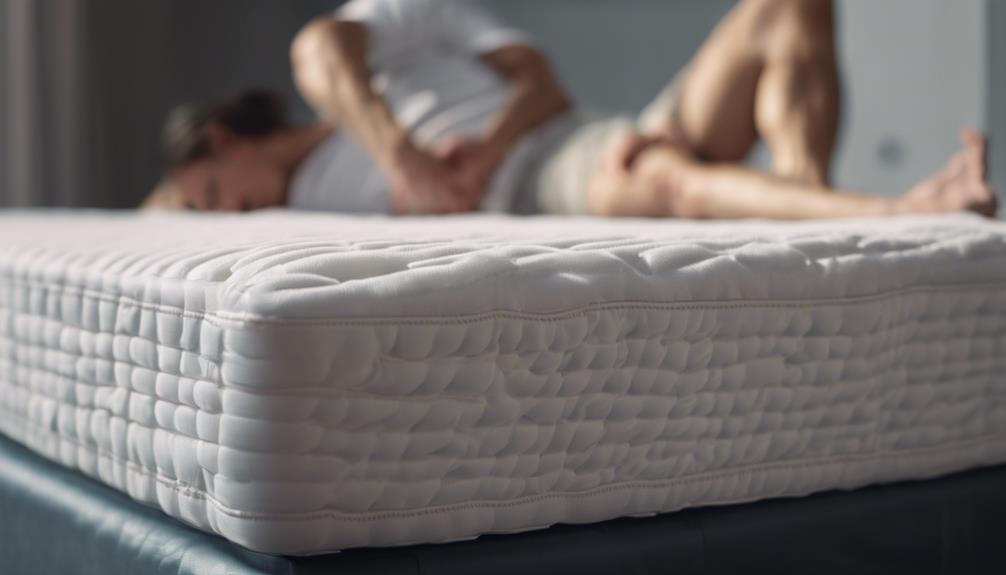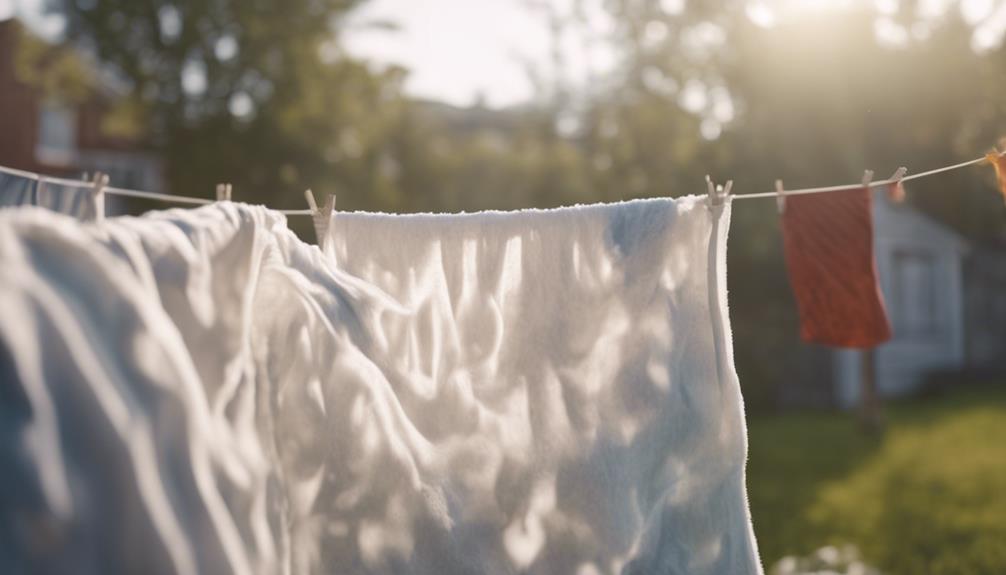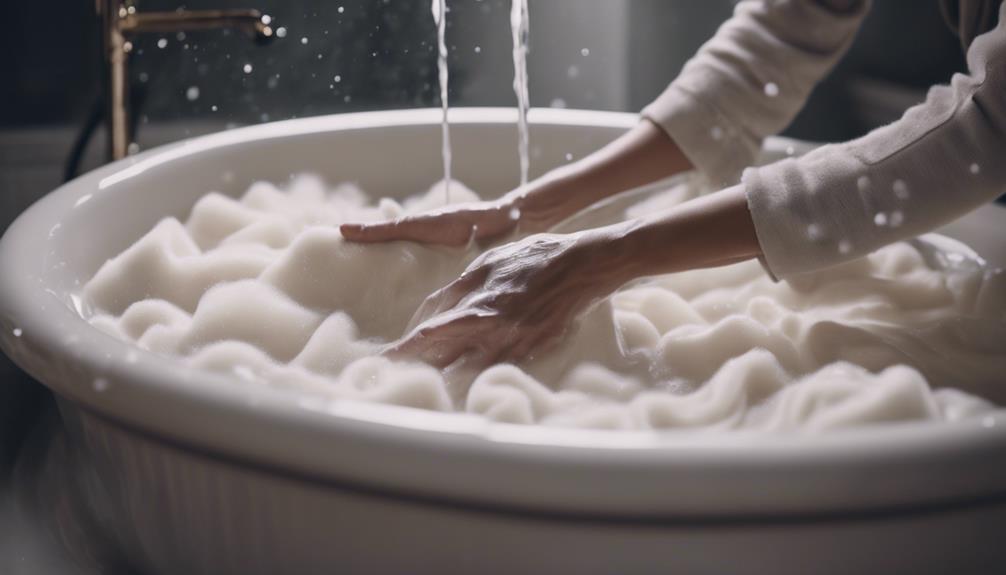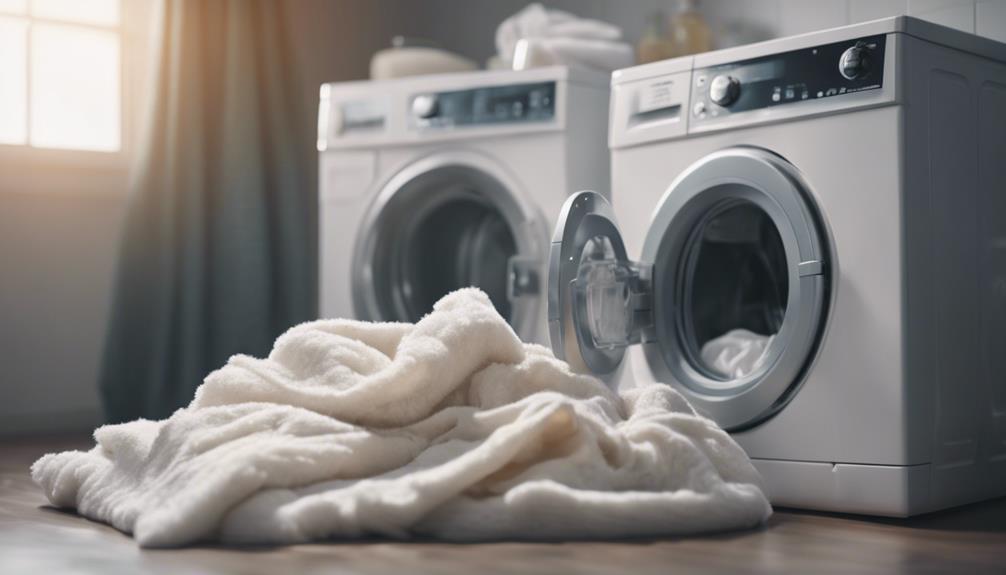If your down comforter is producing noise, it may be attributed to factors such as the type of fabric, tightness of the weave, or added coatings. High-quality cotton covers may initially sound stiff but tend to soften over time. Tight weaves can increase noise levels, while protective coatings like waterproof materials may rustle. Synthetic fabrics like microgel can also contribute to noise, especially when new. Using fabric softener can help reduce crinkling sounds, and duvet covers are effective in muffling noises. Washing your comforter gently 1-2 times a year with mild detergent can help maintain its freshness. By addressing these factors, you can make your cozy comforter quieter.
Key Takeaways
- Stiff high-quality cotton covers can create noise in down comforters.
- Tight weave in comforters can lead to increased noise levels.
- Protective coatings like waterproof materials can cause rustling sounds.
- Synthetic fabrics like microgel can contribute to overall noise.
- Fabric softener reduces stiffness and noise in down comforters.
Reasons for Noisy Down Comforters
We often find that noisy down comforters are a result of various factors, such as the materials used and the construction of the comforter itself. The type of comforter make can greatly impact whether it makes noise.
For instance, down comforters made with stiff high-quality cotton material have a tendency to produce noises when moved or adjusted. Additionally, the tight weave used to sew the comforter can make it puffed up and noisy as it rubs against itself. In addition, the presence of a protective coating like waterproof material can also cause noise when the comforter is shifted.
Comforters made with synthetic fabrics like microgel may also be noisy due to the nature of the materials. Also, trapped moisture within older comforters can lead to noise as the filling clumps together.
Type of Cover Material Impact

High-quality cotton covers on down comforters may create noise initially due to their stiffness. The stiffness of the fabric can cause noise when the comforter moves or adjusts. This noise might disrupt sleep, especially for light sleepers.
In addition to cotton, synthetic fabrics like microgel can also contribute to noise, particularly when they're new. These materials might produce rustling or crinkling sounds as they rub against each other or the bed.
When considering a down comforter, it's important to be aware of the type of cover material used, as it can impact the noise level. While cotton covers are durable and breathable, they might create noise until they soften over time. Therefore, when choosing a down comforter, it's crucial to balance the material's quality with your tolerance for potential noise levels.
Tight Weave and Noise Production
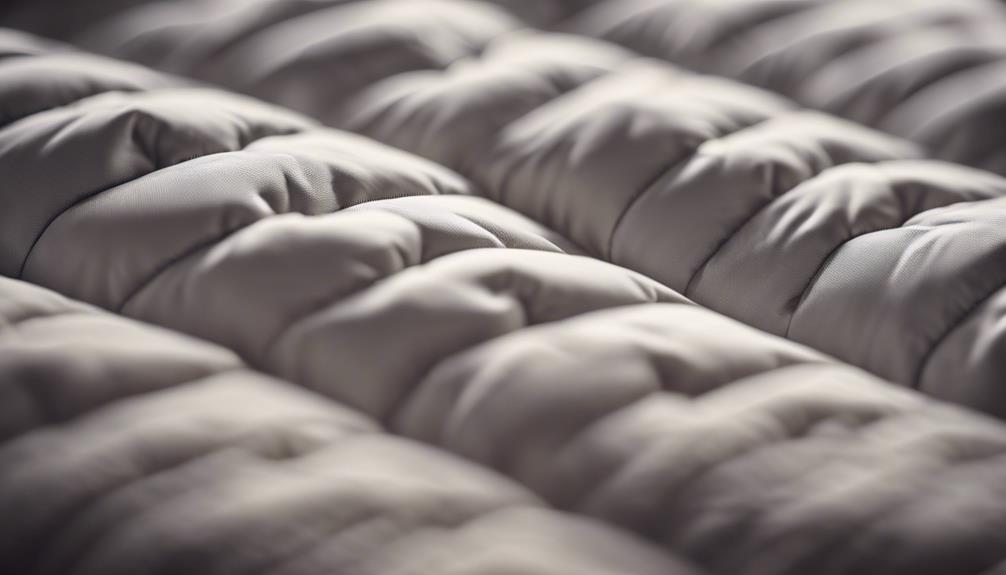
A tight weave in a down comforter can lead to increased noise levels when the comforter is moved or compressed. This tightness affects the comforter's ability to muffle sounds, resulting in a louder overall noise level.
Weave Quality
The tight weave of a down comforter greatly impacts its level of noise production. Comforters with a tight weave can trap air, leading to a puffed-up appearance and increased noise. This type of sewing prevents air from escaping, potentially causing more noise.
The weave tightness directly influences how much noise the comforter produces. Puffed-up comforters created by a tight weave may generate more audible sound. So, when considering a down comforter, paying attention to the quality of the weave is crucial.
A tighter weave can result in a louder comforter due to the trapped air within its layers. Therefore, if you're looking to reduce noise, opting for a comforter with a looser weave may be the way to go.
Noise Reduction
When examining down comforters for noise reduction, the weave tightness plays a significant role in the level of sound produced. A tight weave used in sewing down comforters can lead to a puffed-up appearance but also increase noise production.
Comforters with air-filled pockets may generate more sound due to this tight weave, as it helps trap air inside, potentially resulting in more noise. The tightness of the weave directly impacts the noise level of a down comforter, affecting its overall sound production.
Puffed-up comforters with a tight weave tend to be noisier compared to those with a looser weave. Understanding how weave tightness influences noise production can help in selecting a down comforter that aligns with personal preferences.
Protective Coating Influence
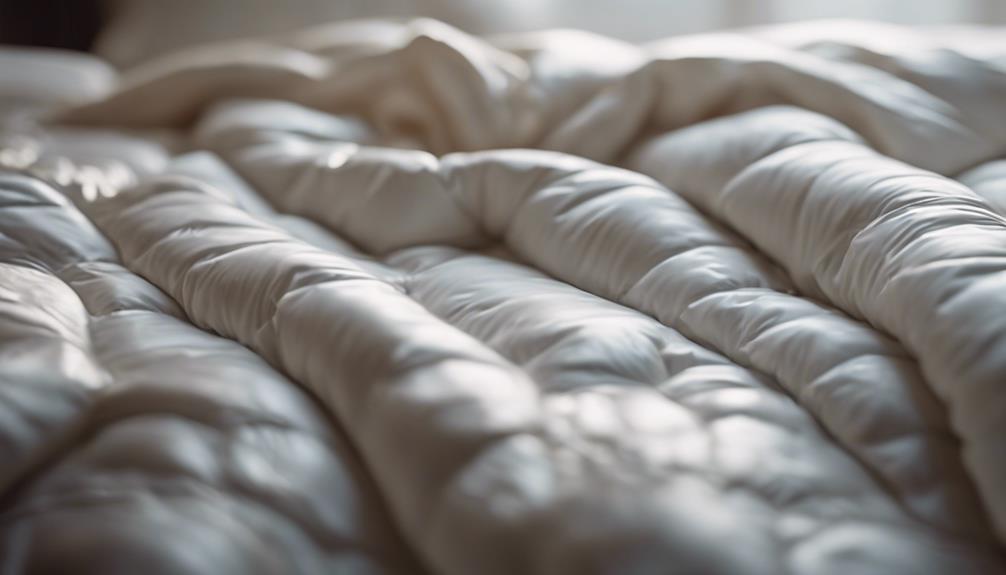
After examining the impact of protective coatings on noise levels in down comforters, it becomes evident that waterproof materials, often comprising dual polymer layers, can greatly contribute to the audible disturbances experienced by users.
These coatings, designed to repel liquids and protect the comforter, can initially produce noise due to their inherent stiffness. The presence of a protective coating can lead to crinkling or rustling sounds when the comforter moves or shifts. However, over time and with use, this noise may diminish as the materials soften and become more flexible.
The dual polymer layers in waterproof coatings add durability and water resistance but can also increase the potential for noise generation. Understanding that these coatings serve a valuable purpose in protecting the comforter can help users tolerate any initial noise disturbances as the comforter adjusts and the sounds gradually decrease.
Synthetic Fabrics and Noise
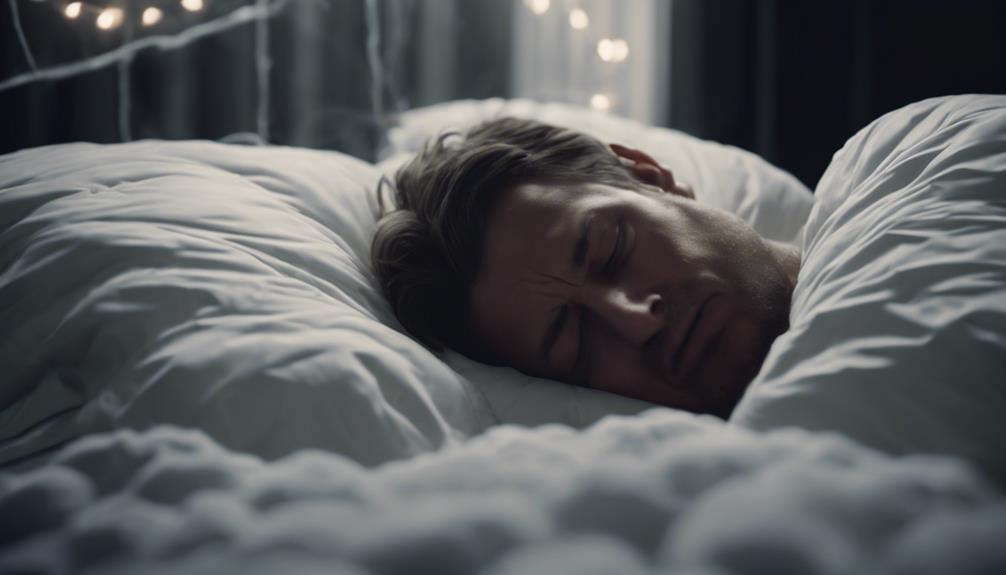
Surprisingly, synthetic fabrics in down comforters can markedly contribute to the overall noise level experienced by users. Fabrics like microgel, commonly used in down comforters, are non-biodegradable and can generate noise due to their composition.
This noise issue is often more noticeable with new comforters made of synthetic fibers, such as microgel, which are water-resistant and durable but tend to produce sound when in use. The polymers used in synthetic fabrics can amplify the noise levels in these comforters, making them louder compared to those made from natural materials like cotton.
The initial noise problems in down comforters can be attributed to the non-biodegradable nature of synthetic fabrics. If you find your down comforter to be particularly noisy, especially when moving or adjusting it, the synthetic materials it contains might be the reason behind the excess sound.
Trapped Moisture Issues
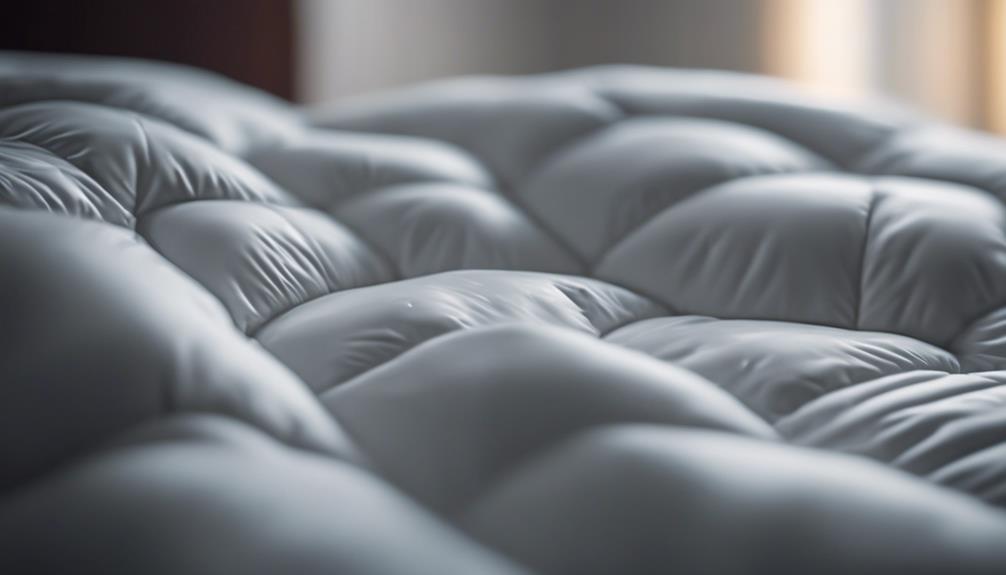
Trapped moisture in down comforters can lead to a swishing or rustling noise, which can disrupt sleep. This dampness can also create an environment that promotes mold and mildew growth, posing health risks.
Proper ventilation and regular airing out of the comforter can help prevent these issues and maintain a quieter sleeping experience.
Dampness Causing Rustling
Dampness within a down comforter can result in noticeable rustling or crinkling sounds. This happens when moisture gets trapped within the comforter, causing fabric friction as you move.
The moisture can come from body sweat or high humidity in the environment. To guarantee this, make sure to ventilate the comforter well and air it out occasionally. It's crucial to make certain the comforter is completely dry before using it to reduce the risk of rustling noises.
Preventing Mold and Mildew
To prevent mold and mildew growth in your down comforter, ensuring proper ventilation and occasional airing out is essential. Mold and mildew thrive in damp environments, leading to musty odors and health risks.
Trapped moisture within down comforters provides the perfect conditions for these fungi to develop. Using a dehumidifier in the bedroom can help reduce humidity levels, further preventing mold growth.
Regularly washing and thoroughly drying the comforter are also effective ways to combat mold and mildew. By taking these preventive measures, you can maintain a clean and fresh down comforter, free from the unpleasant effects of mold and mildew.
Dry Cleaning Benefits
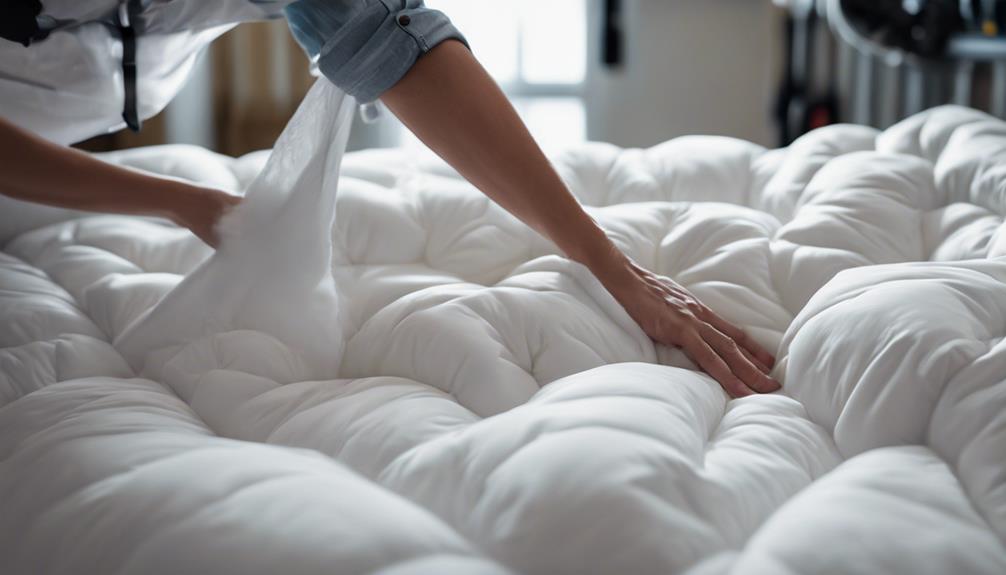
Dry cleaning enhances the longevity and cleanliness of down comforters by preserving their loft and fluffiness. Professional dry cleaning helps maintain the down fill's loft and fluffiness, preventing it from becoming flat and clumped together over time.
It also removes dirt, oils, and odors that can accumulate, keeping the comforter fresh. Additionally, dry cleaning can help preserve the quality and appearance of the fabric, ensuring that your comforter looks and feels like new for longer.
Regular washing may damage down comforters, making dry cleaning the recommended method for cleaning. By keeping your down comforter clean and fresh, dry cleaning can extend its lifespan, allowing you to enjoy its warmth and comfort for many years to come.
Adding Fabric Softener Tips
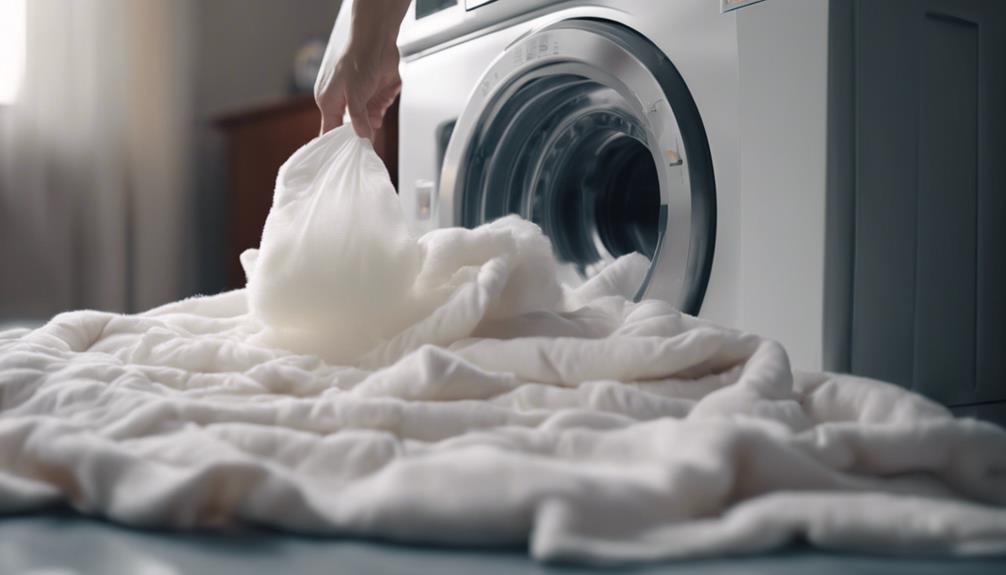
Adding fabric softener to your down comforter can work wonders in reducing that annoying crinkle noise.
Opt for a mild, unscented fabric softener to prevent overpowering scents on your bedding.
During the rinse cycle, evenly distribute the fabric softener to help relax the fibers and soften the fabric for a quieter, more comfortable sleep experience.
Fabric Softener Benefits
Using fabric softener in the wash can effectively soften the fabric of your down comforter, reducing stiffness and minimizing any potential noise. Fabric softener works by coating the fibers of the fabric, making them smoother and more flexible. This process helps prevent the fabric from becoming stiff, which can lead to rustling or crinkling sounds.
Application Techniques
To effectively soften your down comforter and reduce noise, consider incorporating fabric softener with strategic application techniques.
Adding fabric softener to the wash cycle helps soften the fabric, reducing stiffness and minimizing crinkle noise. It's important to use fabric softener sparingly to prevent buildup on the material.
By doing so, you can also decrease static electricity in the comforter, further reducing noise levels. Following care instructions and using fabric softener appropriately are key steps in making your down comforter less noisy.
Duvet Cover Usage Advantages
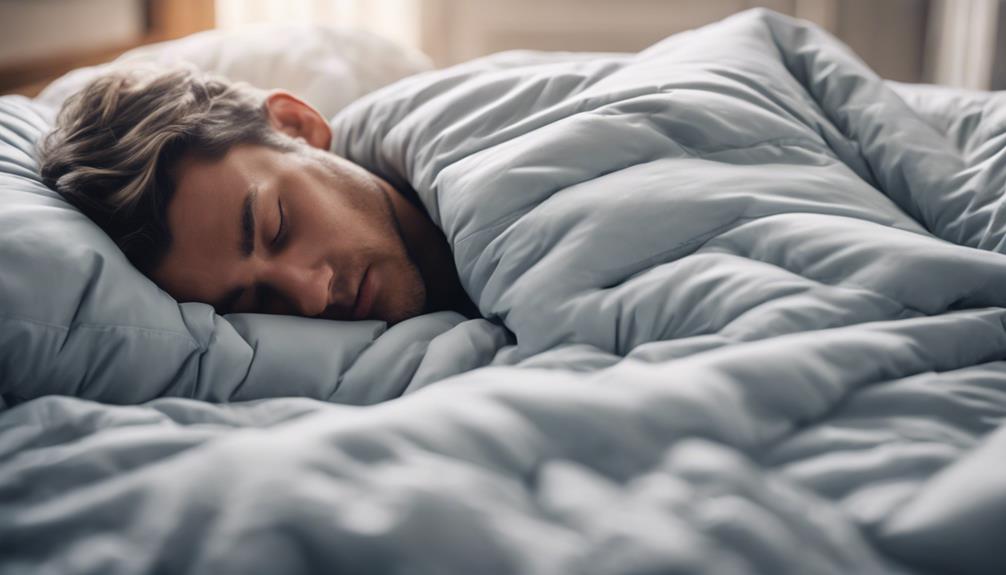
The benefits of incorporating a duvet cover extend beyond mere aesthetics and comfort. Using a duvet cover can help reduce noise from a noisy down comforter. These covers provide a protective barrier that can muffle the sound of the comforter, adding an extra layer between you and the comforter, which reduces direct contact noise.
They're easy to remove and clean, maintaining the comforter's noise-reducing benefits. Opting for a soft, high-quality duvet cover can enhance comfort and minimize noise from the comforter. By using a duvet cover, you not only improve the look of your bedding but also create a practical solution for reducing noise disturbances while sleeping.
This simple addition can make a significant difference in your overall sleep quality by providing a quieter and more comfortable sleeping environment.
Washing Frequency Recommendations
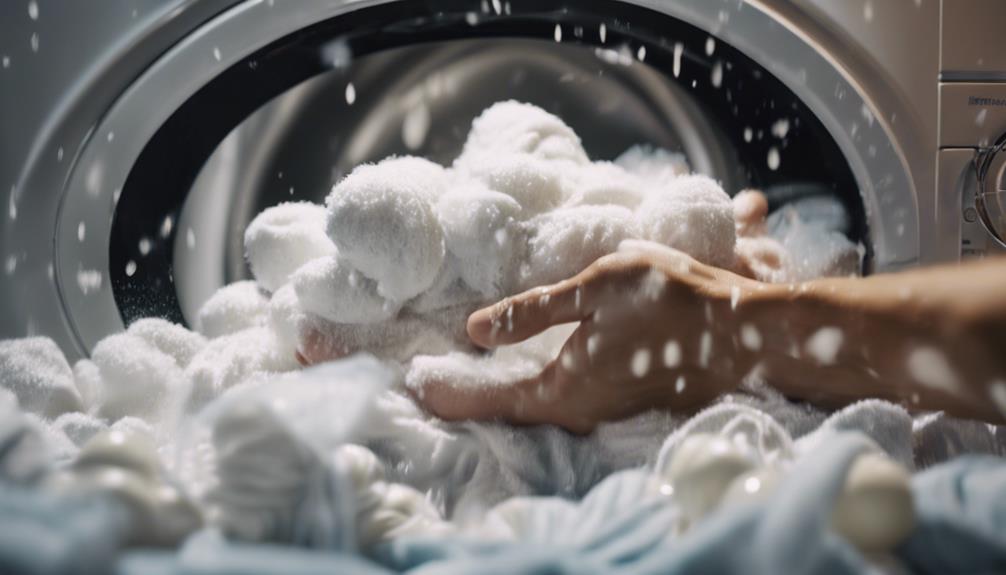
Maintaining the freshness and fluffiness of a down comforter requires washing it 1-2 times per year, guaranteeing peak performance and longevity. To keep your down comforter in top condition, follow these washing frequency recommendations:
- Wash 1-2 times per year: Regular washing helps uphold cleanliness and fluffiness.
- Avoid washing too frequently: Excessive washing can strip the down of natural oils, reducing its insulating properties.
- Use a mild detergent: Choose a detergent specifically designed for down bedding to prevent damage to the feathers.
- Follow care instructions: Always check the comforter's label for the best washing practices to ensure longevity.
- Reduce allergens: Regular washing not only keeps your comforter fresh but also helps decrease allergens, making it a healthier choice for your sleep environment.
Frequently Asked Questions
Are Goose Down Duvets Noisy?
Yes, goose down duvets can be noisy for a few reasons. The fabric used in the cover, the tightness of the weaving during sewing, and any protective coatings can all contribute to the noise.
Additionally, synthetic fabrics like microgel in duvets can also create noise. Over time, moisture trapped within older duvets can increase the noise level.
These factors can collectively make goose down duvets noisy.
How to Fix Crunchy Comforter?
To fix a crunchy comforter, try washing it to soften the fabric. Use fabric softener or dryer balls in the laundry process.
Air dry or tumble dry on low heat to prevent stiffness. Add tennis balls or dryer balls in the dryer to fluff up the comforter.
With regular use, the comforter will naturally soften over time.
Does Washing a Down Comforter Ruin It?
Washing a down comforter can actually improve its fluffiness and performance. Follow proper techniques like using a front-loading washer and mild detergent. Avoid washing too frequently to prevent damage.
Dry thoroughly on low heat with dryer balls to redistribute the down evenly. Always follow the manufacturer's care instructions to maintain the comforter's quality.
What Makes a Duvet Crunchy?
We get it, you want to know what makes a duvet crunchy. Well, it's often the type of cover material and tight sewing techniques that do the trick. Sometimes waterproof coatings or synthetic fabrics like microgel can also add to the crunchiness.
And don't forget about trapped moisture in older comforters. So, if you're wondering why your duvet is noisy, these factors might be the culprits.
– Will Washing My Down Comforter Remove the Wet Dog Smell?
Yes, washing your down comforter can help in fixing down comforter odor caused by the wet dog smell. Using a gentle detergent and fully drying it afterwards can help eliminate the odor. However, it’s important to follow the care instructions to avoid damaging the comforter.
Conclusion
To sum up, noisy down comforters can be caused by the type of cover material, tight weave, and lack of protective coating. Using synthetic fabrics, dry cleaning, and adding fabric softener can help reduce the noise. Duvet covers can also muffle the sound.
It's important to wash the comforter regularly to maintain its quality. Remember, a little extra care now can save you from a lot of noise later on.

